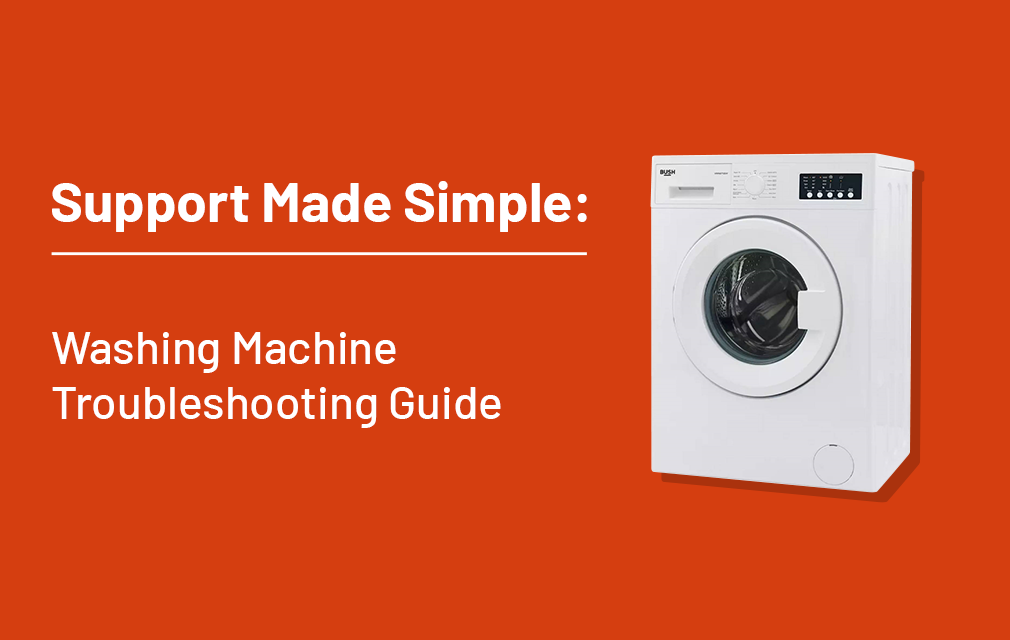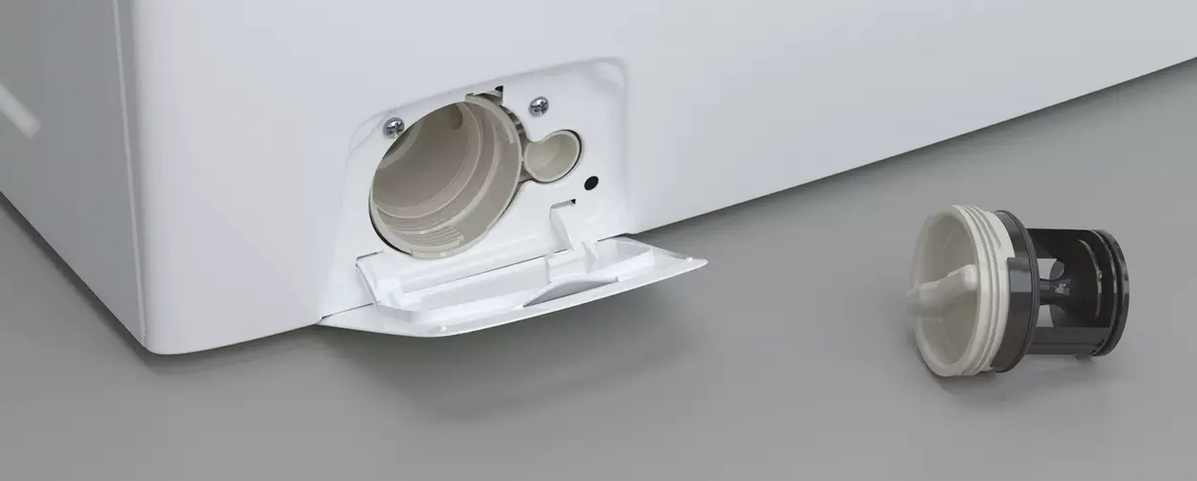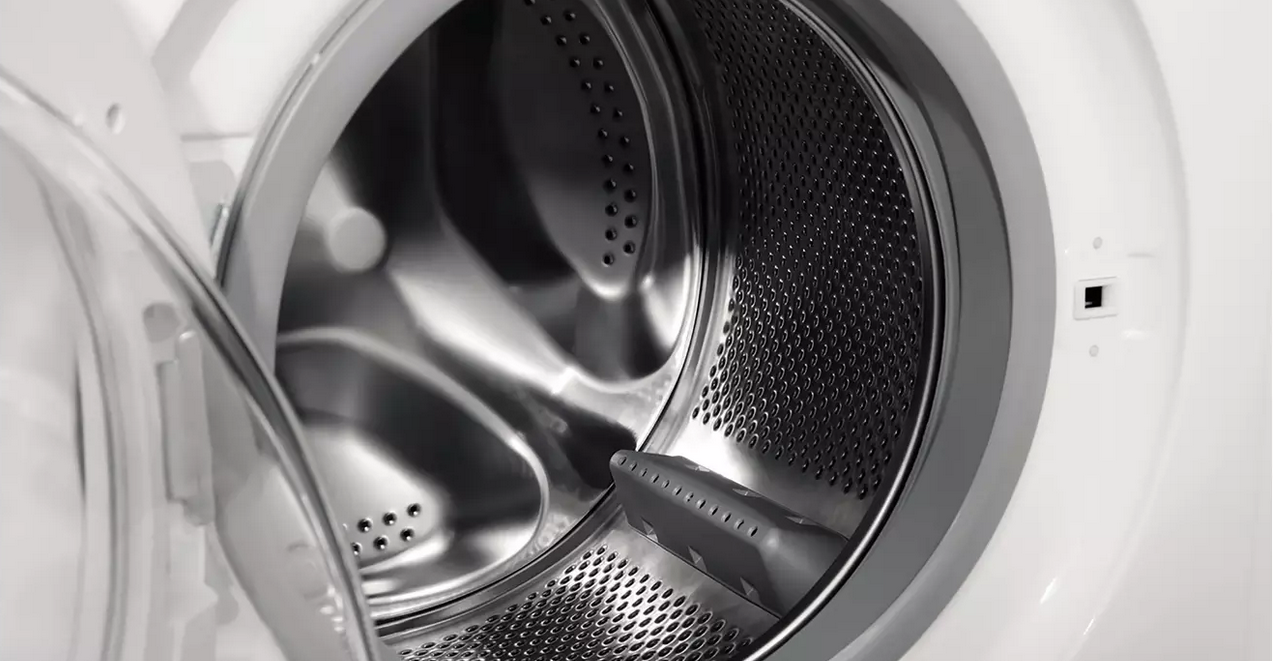
Problems with your washing machine? It’s every home-owners nightmare, mid-week, piles of washing already stacking up and the washing machine stops working! Many issues with appliances can be solved yourself without the need for costly engineer visits.
Below we’ve put together some of the most common washing machine issues and how to fix them yourself.
The drum isn’t reaching a fast spin.
The spin on a washing machine is mainly controlled by the motor, but did you know the load size has a significant impact on this? If your appliance has too much in, or too little, it can affect the balance of the drum which in turn prevents it from reaching a fast spin. To avoid using the wrong load size, check the programme information for your appliance to ensure you put the correct amount in. Also try to avoid washing single heavy items on their own (such as blankets or towels).
The appliance isn’t draining.
When you finish a cycle, you should be able to take the clothes out to dry. But what do you do if you notice water in the drum? This indicates something is affecting the draining. One of the first things to check is the filter itself. This can be a messy job depending on how much water is trapped inside the drum. Make sure to have towels on hand. Ideally if you’re able to get a small tray or dish below the filter this is the best option. Once setup open the filter housing slowly to release the water. Water will then drain out of the appliance, but it should also remove any debris that could be causing the blockage. Fully remove the filter and check for any debris.
If this does not rectify the issue, you will need to pull the appliance out and check the outlet/drainage pipe for any kinks or bends. The appliance will be heavy so assistance may be needed. Any kinks can be resolved quite easily by straightening them out. You can also check the outlet pipe for internal blockages using a pipe cleaner or drain snake to remove any stubborn blockages to allow the water to drain successfully.

The programme will not start.
A common reason why programmes won’t start is if the machine can detect water already in the appliance. We recommend covering all draining checks first. If the issue remains, check that the door has locked correctly. For some machines, you will need to push the door a bit harder until you hear a click and then you can select a programme. You should also double check that you haven’t overfilled the appliance. Whilst we’ve mentioned that too much can stop the drum from reaching a fast spin, if significantly overloaded the drum may not spin at all, giving the illusion that the programme isn’t starting. Avoid this by removing items and trying a smaller load.
The door is not opening.
If the door isn’t opening, this can be frustrating as you’ll want to remove the clothes inside to dry. For most washing machines, once the cycle finishes you may need to wait a few minutes until the door unlocks. This is a safety feature. It is worth checking if you have accidentally enabled a child lock. This can sometimes be shown by a padlock symbol on the display and your user manual should give instructions how to turn this off. You should also consider that, similar to programmes not starting, the door is likely not to open if the appliance can detect water so we may also suggest carrying out all draining checks.

The appliance is noisy.
Whilst we know washing machines can make a noise when the drum spins, what do you do if you find the drum is louder than normal? Our recommendation is to firstly check the clearance; you will need to have a gap around the appliance. If too close to cupboards or walls, when the drum begins to spin it will likely create excessive vibrations which create a loud noise. To rectify this, check the user manual for clearance guidance. Another area to check it to remove any debris or objects from the filter housing and drum seal. Small objects, such as coins, can create loud noises when the machine is spinning as they bounce excessively. Also washing machines that are installed on uneven or unstable surfaces or are poorly balanced are likely to be louder due to vibrations. Ensure you washing machine is level using the adjustable feet.
The appliance is not taking softener and conditioner.
If you find the softener/conditioner is not being taken during the cycle, the place to focus on is the detergent drawer. You should firstly ensure that you have put the detergent liquid or powder in the correct sections of the drawer which will be outlined in your user manual. If in the incorrect section then the machine may not push this through during the cycle. You may need to remove the drawer from the housing and clean it with warm water to remove any blockages which could be preventing the movement of the detergent.
My clothes do not smell nice after a wash.
Smelly clothes are far from ideal when you’ve done your washing. The reason you will get bad smells when using your machine is usually down to the cleaning and maintenance. Build-up of dirt/debris can begin to smell over time, and as a result they will linger on your clothing. Try wiping down the seals to keep nice and clean, check the seals and pockets for dirt and debris, and clean the filter/filter housing.
The ECO wash is long/water is cold.
For most washing machines, the ECO wash cycle will take longer, and the water pumped will be colder than a normal cycle. This is absolutely normal and nothing to be concerned about for this particular cycle. The reason for this is that it reduces the cost to run the appliance as it uses less power by turning the drum slower but for longer and uses less energy by using cold water.
Have any more questions? Don’t worry, you can visit the Argos Support Site and search your catalogue number to find more guidance for your specific model.
For more articles on washing machines, see below:
- Not sure about washing machine drum sizes? A guide to help
- Keep your Washing Machine clean
- Washing Machines: Why isn’t the door opening?
- Cost-Effective Tips for Washing Machines and Tumble Dryers
- What is overloading and underloading?
- What causes drainage issues?
- Why do appliances need clearance?
- How to solve water filling issues?